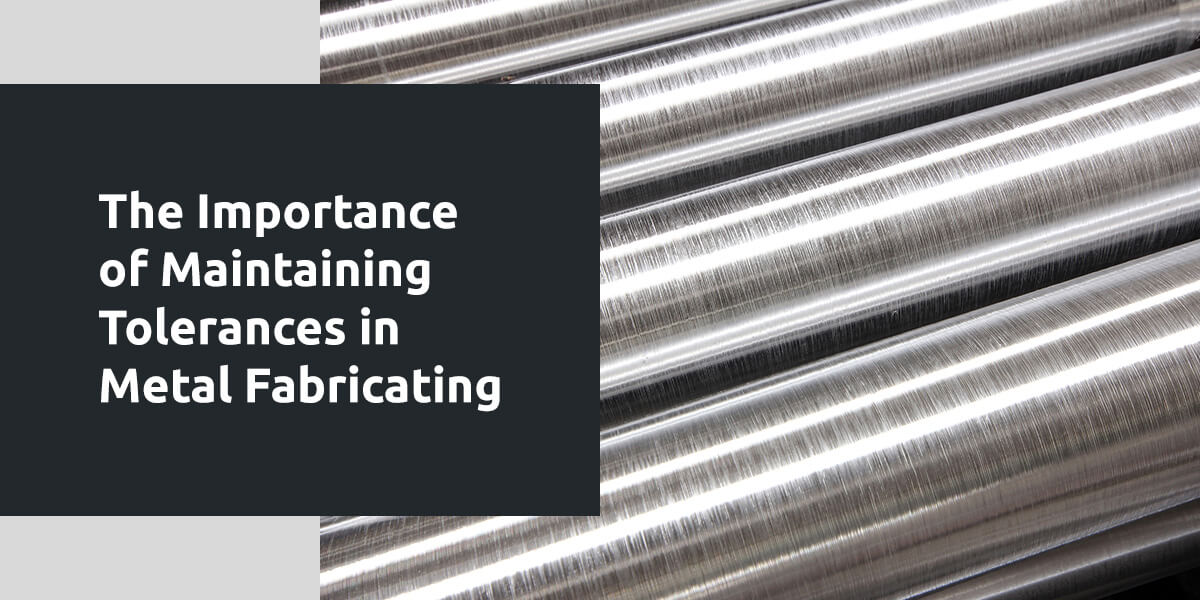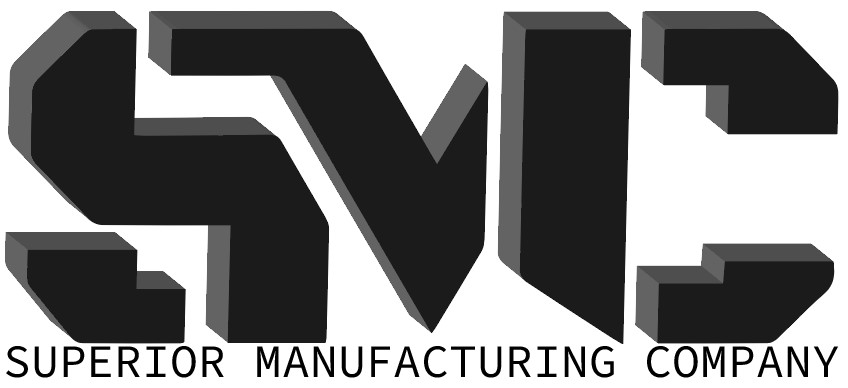
Metal fabrication projects are demanding and require intense precision — yet slight size, shape and strength variations are inherent in any manufactured part. Tolerances indicate just how much variation is acceptable. Working with an experienced metal fabrication company helps ensure you receive parts that fit your specifications.
What Does “Tolerance” Mean?
Tolerance is an essential part of design for manufacturing (DFM) and refers to how much a part can deviate from the intended specifications. It is most often associated with a part’s size. For example, a 20-inch metal rod with a tolerance of ±0.05 can acceptably measure between 19.95 inches and 20.05 inches.
The level of tolerance depends on the accuracy and precision required. Parts used in the aerospace engineering industry, for example, may require ultra-precision and can only vary by ±0.00001 inches, while initial rough cuts may be able to vary by as many as ±0.060 inches.
Aside from this dimensional tolerance, there are other types, including:
- Geometric tolerance: Geometric tolerance is required when designing and manufacturing parts with holes, slots and other shape variances. For example, manufacturers need to know how much variance is allowed when it comes to the diameter of a hole within a part.
- Positional tolerance: Positional tolerance ensures the accuracy of the placement of holes, slots and other geometric elements.
- Flatness tolerance: Flatness tolerance indicates a part’s acceptable flatness or waviness.
- Cylindrical tolerance: This type of tolerance ensures a cylindrical part is round and straight enough.
- Parallelism tolerance: Parallelism tolerance defines the acceptable variations in alignment between two surfaces or components.
The options don’t end there — there is also perpendicularity tolerance, surface finish tolerance, concentricity tolerance and more. You can contact a metal fabricating company to determine which is applicable to your project.
Factors Influencing Tolerance
The following factors help determine the appropriate tolerance level for a component:
- Material properties, including thermal expansion rates
- The importance of precision in your industry
- Project deadlines
- How concerned you are about aesthetics like color and texture
- Whether there are any moving parts
Considering these details during DFM will help ensure you receive a product that meets your and your clients’ needs.
Why Is Maintaining Tolerances Important During the Manufacturing Process?
Explore why tolerances in manufacturing are essential below.
1. Ensures Parts Fit Together Accurately
The most minuscule miscalculations can cause parts not to fit together. Defining sheet metal tolerances helps ensure components remain functional and fit snugly — no pesky gaps or loose parts.
2. Makes the Manufacturing Process More Cost-Effective
Determining the appropriate tolerances helps ensure manufacturers will not have to invest in post-processing work. Additionally, not every part requires intense precision.
Because ultra-precision is typically more expensive, defining the allowable tolerance according to the component and industry ensures parts are not more precise than necessary. For example, identifying a tolerance of ±0.0005 for construction components that do not require extremely precise fits could increase material and labor costs.
3. Reduces Ambiguity and Confusion
Manufacturing parts without first defining the allowable variances could result in receiving unusable components. Defining and maintaining tolerances improves communication with manufacturers and clarifies your expectations for the components.
4. Gets Products Finished Quickly
Establishing tolerances takes some time upfront, but it reduces the chances of mismeasurements requiring fixing or making new parts.
5. Improves the Final Look of a Product
If you’ve ever seen a product where a part doesn’t sit flush against another component, you’ve seen a product where tolerances weren’t a priority. Identifying allowable variances eliminates gaps and improves aesthetics.
6. Encourages Better Quality Control
Meeting quality control standards is more manageable with defined tolerances. You can maintain better consistency across batches and limit inaccuracies and defects.
7. Allows Parts to Be Interchangeable
In the automotive and heavy equipment industries, parts require regular replacement. Identifying and maintaining tolerances leads to better product consistency, which allows for the easy replacement of fuel injectors, engine blocks, valve springs, pistons and other vehicle components.
8. Reinforces Stability and Durability
Without establishing tolerances, parts may experience premature wear and tear. Precisely manufactured products are more stable, leading to increased durability and a longer life span.
9. Boosts Customer Satisfaction
All of these benefits combine to enhance the customer experience. Maintaining tolerances leads to reliable, aesthetically pleasing, consistent, durable and long-lasting components that will surely please clients.
Determining the Correct Sheet Metal Tolerances for Your Project
Working with a reliable, industry-leading metal fabrication company is the best way to ensure the correct tolerances for your application. These professionals can assist you with navigating challenges like:
- Raw material size variances: Defining sheet metal tolerances can be more complex than traditional machining projects because sheet stock is typically thinner than the stated gauge thickness. For example, the stated thickness could be 0.065 inches, while the actual thickness is 0.064 inches, which would affect your tolerances. Sheet metal fabricators can help you account for these variances.
- Overestimating the required tolerances: Overestimating tolerances can result in an ultra-precise part — which is great for aerospace components but not entirely necessary for general machinery parts. Higher precision also comes with higher expenses, so paying for incredible precision unnecessarily can drive up costs.
- Underestimating the required tolerances: When you underestimate the appropriate tolerance, components might not function properly. You could also end up dealing with gaps or other aesthetic errors that impact the customer experience.
- Missing tolerances: When you’re designing one part that needs to fit into another, you must establish tolerances for both pieces. Forgetting to define the tolerance for one component can lead to issues like product failure.
When it comes to metal fabrication, the details matter. While it’s ultimately the manufacturer’s responsibility to deliver high-quality projects that meet your specifications, they’ll have an easier time doing so when you provide an appropriate level of detail. There’s no such thing as too much specificity when you want a high-quality product.
Choose Superior Manufacturing Company for Expert Metal Fabricating Services
Superior Manufacturing began during the post-World War II automobile boom. More than 75 years later, we continue our legacy as an industry-leading precision metal manufacturing company. We supply the products engineers, quality control managers and original equipment manufacturers need to serve their customers. From operator cab enclosures to propane tank storage solutions and other custom projects, we can supply you with high-quality fabricated metal products.
You can also count on us to maintain tight tolerances that ensure reliable results your customers will appreciate. We’re committed to continual improvement and investing in the most advanced technology to maintain our status as industry leaders. Contact us today to begin your custom metal fabrication project.

